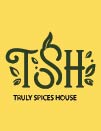
CARDAMOM
The Elettaria cardamomum belongs to the Zingiberaceae family, sharing kinship with ginger and turmeric. The plant flourishes in warm, humid climates with well-drained soil. Two primary varieties of cardamom dominate the global spice trade are Green Cardamom & Black cardamom (this variety is mainly used in pharmaceutical company).
The Cardamom: A Fragrant Journey through History
Cardamom, the “Queen of Spices,” boasts a rich history and a captivating aroma that has tantalized taste buds for millennia. This prized spice, derived from the seeds of the Elettaria cardamomum plant, is native to the verdant rainforests of the Western Ghats in South India. Its journey from these lush origins to kitchens around the world has been a tale of exploration, cultural exchange, and culinary innovation.
Cardamom’s versatility is a key to its popularity. In Indian cuisine, it features prominently in savory dishes like curries and biryanis also lending its fragrance to sweet treats like puddings & other beverages. In Nordic countries, cardamom is a most sought ingredient in baked goods, breads, pastries, and even savory meatballs with its unique warmth. Across the Middle East, cardamom adds a touch of magic coffee and stews. The smoky notes of black cardamom are particularly appreciated in Middle Eastern and South Asian meat dishes.
Ayurvedic & Religious significance of cardamom
Ancient Textual References: Early Ancient Indian Sanskrit texts like the Charaka Samhita and Sushruta Samhita mention cardamom’s medicinal properties. These texts revered it for its digestive, carminative (relieving gas), and aphrodisiac qualities. It also helps in balancing doshas,
In Ayurveda, cardamom is considered to possess a warming and slightly sweet nature. It was believed to pacify Vata, and Kapha doshas, two of the three elemental energies of our body.
Offerings and Rituals: Cardamom found a place in religious ceremonies and offerings. Its pleasant aroma was believed to be auspicious and a symbol of purity. Texts mention its use in puja (worship rituals) and as an offering to deities.
Cardamom – Historical Spice Route
Cardamom’s historical significance is undeniable. Evidence suggests its use in ancient civilizations as far back as 4th century BC. Trade routes carried cardamom from India westward, reaching Greece and Rome. Arab traders later played a pivotal role in disseminating cardamom throughout the Middle East and Europe. By the medieval era, cardamom had become a highly demanded commodity, fetching extra ordinary prices and even being used as currency in some regions for trade.
Beyond the Plate:
Cardamom’s applications extend beyond the culinary realm. Traditional medicine in various cultures has utilized cardamom for its purported digestive and carminative properties. It’s essential oil finds use in aromatherapy for its calming and uplifting effects.
Cardamom, with its captivating fragrance and fantabulous flavor profile, continues to be a treasured spice. Its journey from the India to global recognition is a testament to its enduring appeal. As we explore new culinary horizons, cardamom remains poised to add its unique touch to dishes across the globe, a legacy that promises to endure for generations to come.
Trade and Commerce:
Spice Route Jewel: India’s reputation as the “Spice Coast” generate partly from its abundance of cardamom. Trade routes carried cardamom from the Malabar Coast to west reaching Mesopotamia and beyond. This trade not only brought economic prosperity but also facilitated cultural exchange.
The possession and use of cardamom transcended its practical applications. It symbolized wealth, social status, and a refined palate. Cardamom-infused betel nut chews, for instance, were a marker of social standing.
Conclusively, cardamom’s journey in ancient India transcended its culinary value. It was revered for its medicinal properties, integrated into religious practices, and served as a symbol of social status. The enduring popularity of cardamom in India today is a testament to this rich and multifaceted history.
